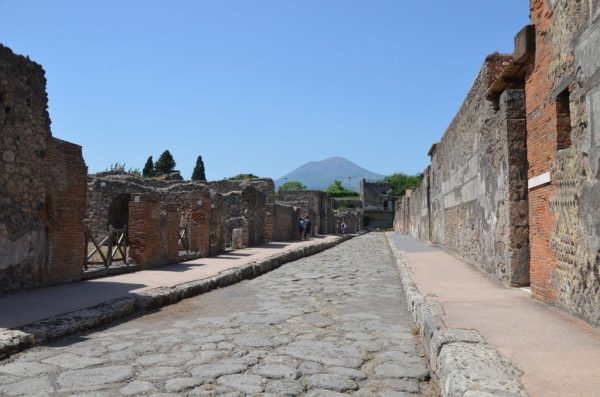
In 1810, amidst his vast empire, Napoleon Bonaparte couldn’t surpass the speed of communication achieved by the Romans nearly two millennia earlier.

The Roman road network, developed during the first and second centuries AD at the peak of their empire, revolutionized travel across Europe, the Levant, and North Africa. This article delves into the unparalleled engineering prowess that underpinned the construction of these enduring pathways.

- The Foundation of Roman Roads:
Roman roads were meticulously engineered, embodying a combination of innovation, efficiency, and durability. Their construction began with a solid foundation of carefully laid stones or gravel, known as the “statumen.” This layer provided stability and prevented water from seeping into the roadbed, a critical aspect in ensuring longevity. - The Importance of Drainage:
A distinctive feature of Roman roads was their advanced drainage systems. Engineers incorporated camber, a slight convex shape, into the road surface to facilitate water runoff, preventing erosion and maintaining the road’s integrity. Additionally, strategically placed culverts and ditches directed excess water away from the road, minimizing damage caused by flooding and enhancing its resilience. - Road Construction Techniques:
Roman roads were constructed using a systematic approach that optimized both time and resources. After the statumen was laid, several layers followed, including the “rudus” (broken stones or gravel), the “nucleus” (a mixture of lime, sand, and water), and the “summa crusta” (finest paving stones). This methodical layering ensured uniformity and strength throughout the road’s structure. - Milestones and Signposting:
To aid travelers, Roman engineers installed milestones along their roads at regular intervals, indicating distances to significant destinations. These milestones not only provided navigational guidance but also served as markers for maintenance purposes. Furthermore, signposts, known as “miliaria,” displayed important information such as road names, distances, and directions, contributing to efficient travel and communication. - Expansion and Legacy:
As the Roman Empire expanded, so too did its road network. These thoroughfares facilitated the movement of troops, goods, and ideas, fostering trade and cultural exchange across vast territories. Despite the decline of the empire, many Roman roads endured, serving as enduring monuments to ancient engineering prowess and shaping the development of modern transportation networks.
Conclusion:

The engineering brilliance of ancient Roman roads remains unparalleled, standing as a testament to the ingenuity and vision of a civilization that shaped the course of history. From their meticulous construction techniques to their innovative drainage systems, Roman roads exemplify the enduring legacy of human innovation and resourcefulness. As we marvel at these ancient marvels, we are reminded of the profound impact of engineering on the fabric of civilization, transcending time and leaving an indelible mark on the landscape of human progress.





